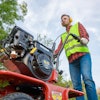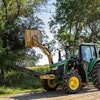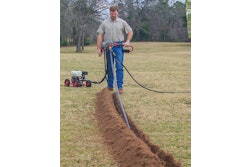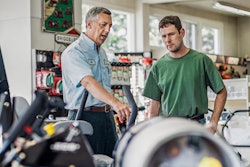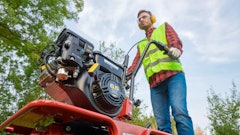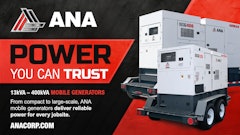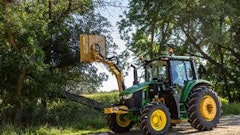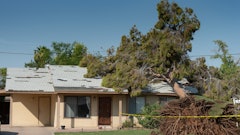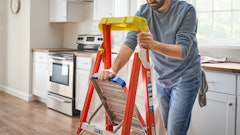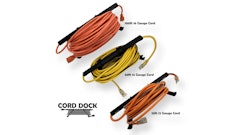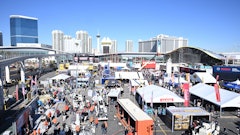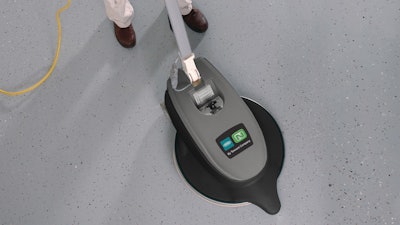
Restoring floors is a multi-step process that can be extremely labor-intensive if you don’t have the right equipment. Whether you’re just beginning a floor restoration project or about to put the finishing touches on one, equipment like sanders, shot blasters, buffers and burnishers can not only speed up your project, but deliver next-level results as well.
Preparing the Floor
Before renting any floor restoration equipment, the first thing to do is prep. This includes removing furniture, covering doorways, air grills, and turning off your HVAC system to keep dust confined to your work zone. Then remove any curtains, blinds, and pictures hanging on walls. Other tips include:
- Remove any doors. It’ll be easier to sand, edge, buff, or burnish if all impediments to your work are done first.
- Nail down loose boards with finish nails.
- Make sure to countersink all flooring nails. Protruding nail heads will rip the sanding belt or possibly gouge the sanding drum.
Now that your workspace is prepped, it’s time to measure the floor. By knowing the square footage, it’ll make it easier for experts at an equipment rental company to help you select the right equipment and accessories like sanding belts, discs, and more.
Sanding and Edging
Floor sanding is the process of removing the top surface of a wood floor with an abrasive material-like sandpaper. Floor materials that can be sanded include wood, cork, particleboard, and sometimes parquet.
Even before you rent a sander or an edger (used to sand the edges of a room as well as more confined areas like a hallway), you need to find out if your floor is solid or engineered hardwood. While some engineered floors can be sanded and refinished, many cannot. Making a mistake here could be costly.
Now, you’re ready to find the sander. There are three main types of sanders used for refinishing a wood floor. They are:
- Buffer sanders: Work in a circular motion, and are often used to polish and clean floors in a commercial or industrial space.
- Square vibrating sanders: The easiest, yet most labor-intensive sander to use. Recommended for small, confined areas only.
- Drum sanders: The most efficient, but require a bit of practice before use.
Whatever sander you ultimately choose for your job, the key thing to remember is to keep the sander moving. The last thing you want on your hardwood floor is a gully, which is a groove resulting from the sander penetrating the wood too deep.
Edgers, just like a drum sander, must be handled with care to avoid damaging the floor. These machines are powerful and, if you’re not matched up with the right sander and grit, could burrow into the floor and potentially ruin your project.
When renting a sander and edger, experts at the rental company will make sure the power and grit are matched to your specific application – and they’ll also provide instruction.
Shot Blasting
Shot blasters, like buffers, are used to remove dirt, grime, and other contaminants from a concrete floor prior to adding coatings or overlays. But unlike buffers, shot blasters produce a rough texture, allowing decorative toppings to “stick” better to the concrete surface.
Powered by electric, diesel, or gas, and available as manual or self-propelled walk-behind units, shot blasters shoot tiny steel balls at the surface of a concrete floor to “fracture off” the surface layer whether it’s dirt, coatings, paint, or other contaminants. As the operator passes over the floor with the machine, the balls bounce back into the shot blaster for later use.
Also, not to be confused with a scarifier, shot blasters are an ideal machine to profile broom-finished or hard-troweled concrete. However, it is not recommended for the removal of thick, rubbery, or elastic coatings.
Buffing and Burnishing
Now that you’ve sanded and refinished your floor, you’ll need the machines to maintain them. Floor buffers and burnishers are built to do just that. These machines, along with a floor maintenance program, will keep them looking like new long into the future.
Floor buffers, also known as strippers, swing machines, and side-to-sides (because of the way operators are supposed to move them), are industrial cleaning machines designed to strip or remove wax, dirt, and scuff marks from a floor while also restoring it to its original shine.
Operating at speeds ranging from 175 to 400 RPM, buffers, when equipped with the right attachment such as a brush, can also be used to scrub and clean carpets.
While burnishers may look like a buffer, they have a very different purpose. Unlike the slow speeds of a buffer, burnishers spin at very high rates to make floors shine and almost appear wet. The biggest differences between a buffer and a burnisher are the speed, motion, and purpose of each machine.
Most burnishers spin between 1,500 and 3,000 RPM, and unlike buffers that move side to side, these machines move forward and backward. Many maintenance operators will use a burnisher after buffing a floor.
This blog post was adapted from its original version on the Herc Rentals website and used by Rental with permission from the company.
